
[ad_1]
SaaS is synonymous with innovative and ground-breaking products. But the pressure to innovate is just one of the many challenges SaaS companies face. In this highly competitive and saturated market, SaaS companies must continuously meet their KPIs, drive customers down the B2B funnel, and ensure they stand out from their competition.
60% of B2B SaaS companies reported their biggest marketing problem is a lack of time and resources. Depending on your stage and business model, you will need different tools and strategies to grow your company without breaking the marketing bank.
What is B2B SaaS Marketing?
B2B SaaS marketing refers to all marketing activities B2B SaaS companies use to improve brand visibility, get leads down the funnel, and ultimately increase customer acquisition, retention, and revenue. SaaS is a particularly competitive market, so B2B SaaS-specific marketing is crucial to get your product in front of the right prospects. B2B SaaS marketing activities must convey the product’s benefits, the opportunities it brings to prospects, and how it will help solve their most pressing problems.
The goal is to implement a range of top, middle, and bottom-of-the-funnel marketing activities covering every funnel stage. However, leveraging marketing to strengthen customer relationships is just as important, as SaaS businesses are often subscription-based and must continuously show their value to clients. This can be achieved through activities such as monthly newsletters, use case-specific tutorials, or exclusive content.
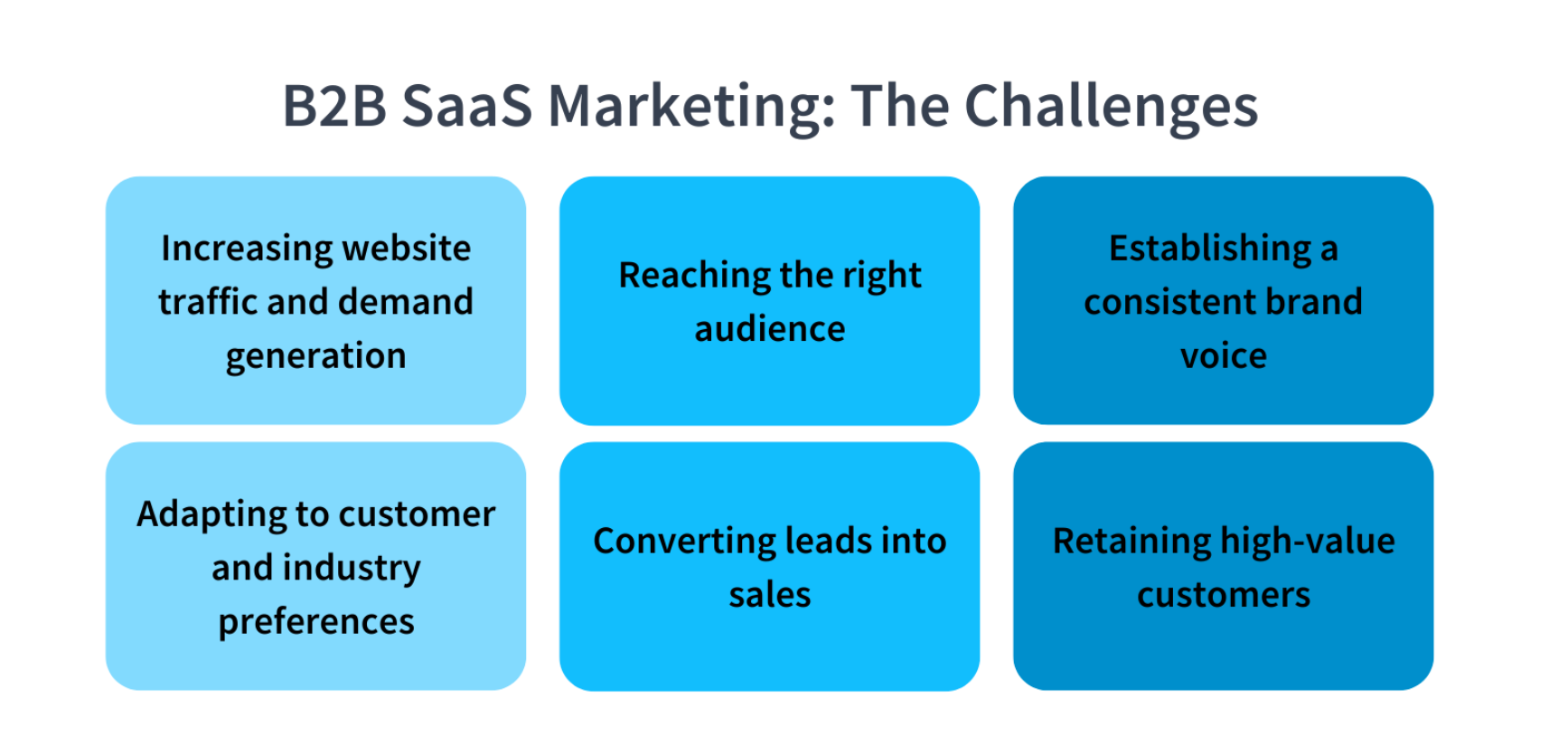
Source
B2B SaaS Marketing: The key differentiators and challenges
Customer journey
A typical B2C customer journey on the Amazon marketplace involves as few as two or three For example, let’s look at a typical B2C customer journey on the Amazon marketplace. An Amazon sale is completed in as few as two or three clicks. It’s that simple. In B2B SaaS, this is more complex. The average SaaS sales cycle lasts 84 days and includes various touchpoints, from engaging with a post on social media to reviewing a product page and getting a product demo. This complexity makes marketing efforts even more crucial, as you must engage with your prospects throughout their customer journey.
Sales process
Different stakeholders within an organization will have different challenges and goals. For instance, Product leaders will look to simplify their roadmap and streamline tasks, whereas Finance leaders will be more concerned with keeping costs down. Purchasing B2B SaaS products often requires the approval of multiple stakeholders, especially if the product offers benefits across departments. Therefore, your marketing efforts must address every possible pain point.
Customer segmentation
Customer segmentation in B2B SaaS involves dividing your target organizations into specific groups based on industry vertical, company size, geography, and usage behavior. It would help if you also looked into persona-based segmentation. You’re selling to organizations composed of, sometimes, thousands of employees, so a persona-based approach enables you to understand who the decision-makers you need to target are.
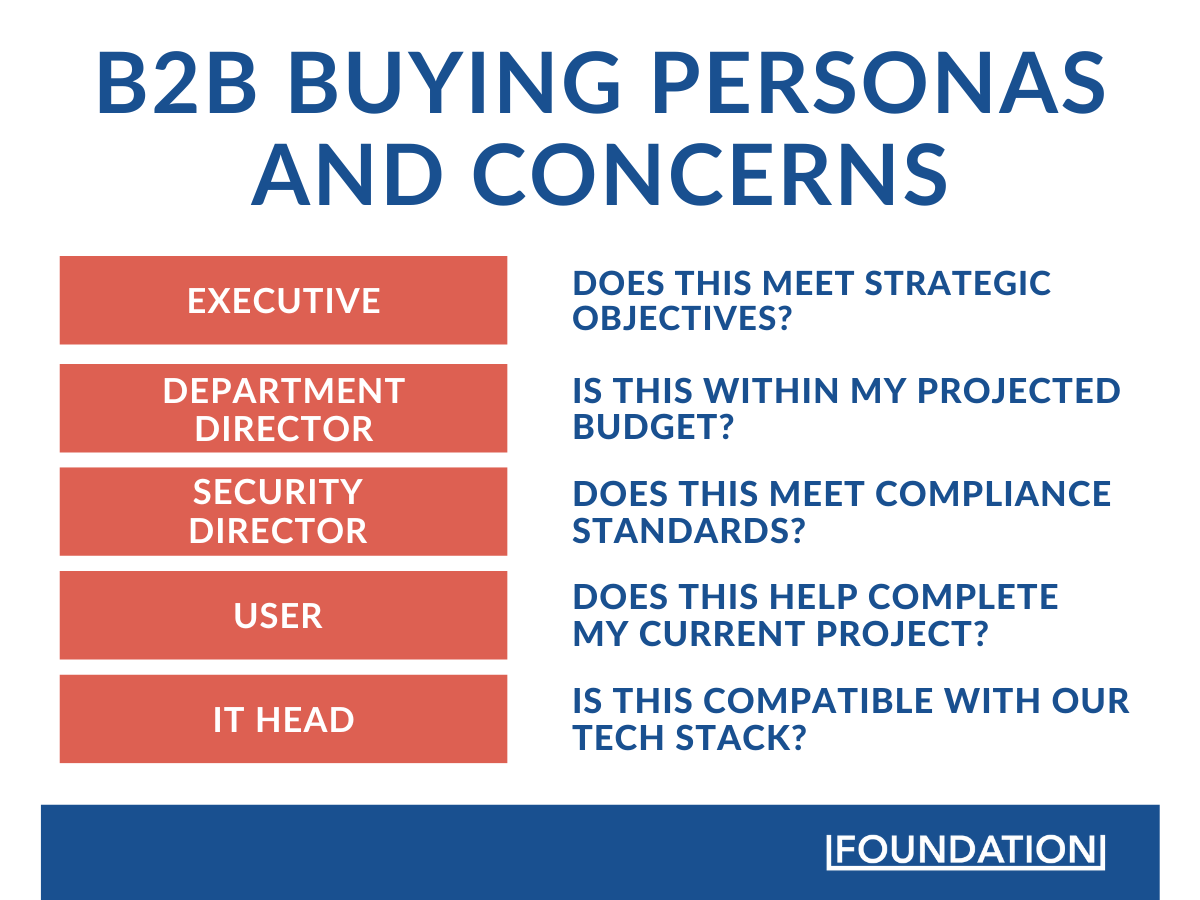
Source
Long-term relationships
SaaS products are often subscription-based, with many upselling and cross-selling opportunities. The nature of SaaS means that you must always keep your customers engaged and interested in your product through educational content or community-management initiatives. Building and maintaining long-term relationships also helps you create champions in the business who will advocate for you and your solution and increase the chance of retention.
Higher competition
The global SaaS market was valued at $237.48 billion in 2022 and is expected to surpass $908.21 billion by 2030. These staggering numbers are synonymous with growth and innovation but also with exponentially high competition. With many other SaaS companies targeting the same audiences, your marketing team must do the heavy lifting to make your brand stand out.
Measuring the success of B2B SaaS Marketing
Ultimately, your marketing strategies should drive revenue through customer acquisition or retention. But you can’t measure the success of your B2B SaaS marketing purely on revenue- other key metrics lead and impact your bottom line. B2B SaaS businesses may have different goals, but overall, these are some of the demand generation metrics you should keep an eye on:
- Website traffic: visitors, views, and engagement
- Conversion rates
- New free users (if you offer free trials)
- Marketing Qualified Leads (MQLs) and Sales Qualified Leads (SQLs)
- Customer Lifetime Value (CLV)
- Customer Acquisition Cost (CAC)
11 Proven Strategies for B2B SaaS Marketing Growth
1. Define your Ideal Customer Profile (ICP)
Conduct thorough market research to define your Ideal Customer Profile (ICP). Consider your target demographic, organization, industry vertical, goals, challenges, and buying criteria.
You can go even deeper and establish buyer personas. These decision-makers within an organization will use your product and hold the power to make that purchase. Define their demographics, background, goals, challenges, and even interests, and put a name to the persona (hello, Product Paul and Compliance Carol).
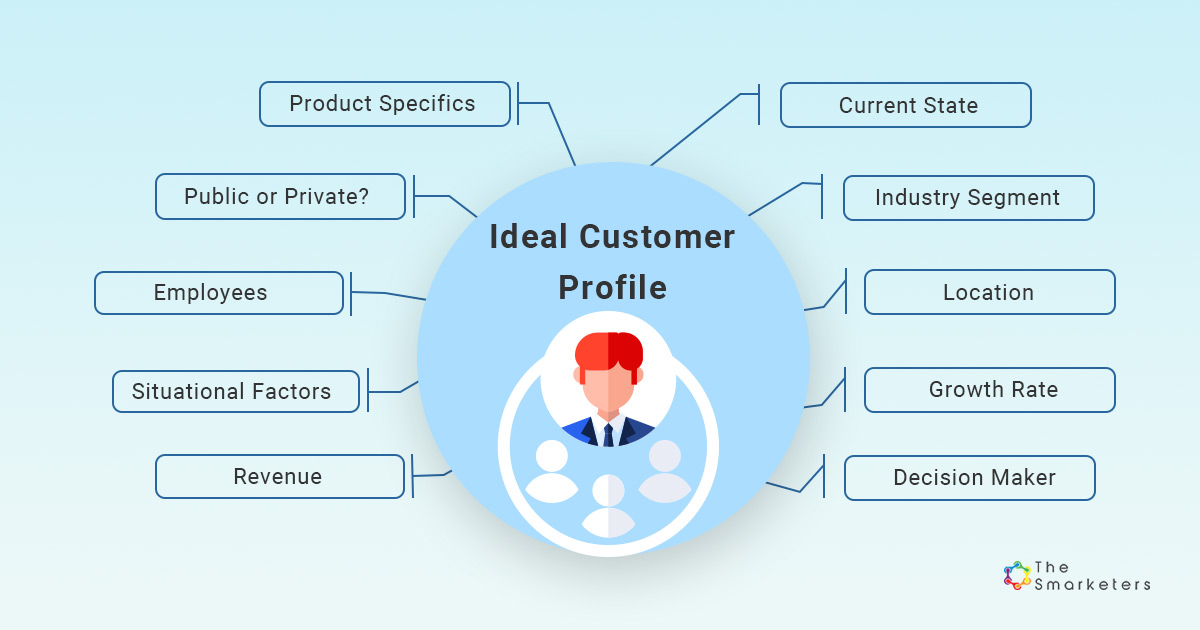
Source
2. Meet your customers where they are
80% of B2B marketers leverage LinkedIn to reach their target customers, and 65% have increased their LinkedIn usage in the past year. Your potential buyers are actively using social media, so it’s essential to have a long-term strategy to leverage these channels efficiently.
Post consistently on LinkedIn and other popular social platforms, and ensure your copy and visuals are engaging. Consider using tools like Oktopost to boost your social media presence without overburdening your team. You can also incorporate lead gen forms on LinkedIn to capture leads for other marketing activities, like webinar sign-ups.
3. Provide quality, value-added content
Your content should be accurate and engaging, answer your audience’s most pressing questions, and add value to their day. Ensure your writer dives deep into topics, delivering the insights and actionable guidance your audience seeks. Check your social media data to understand what topics resonate most with your audience. It’s also worth checking industry news to jump on trends timely.
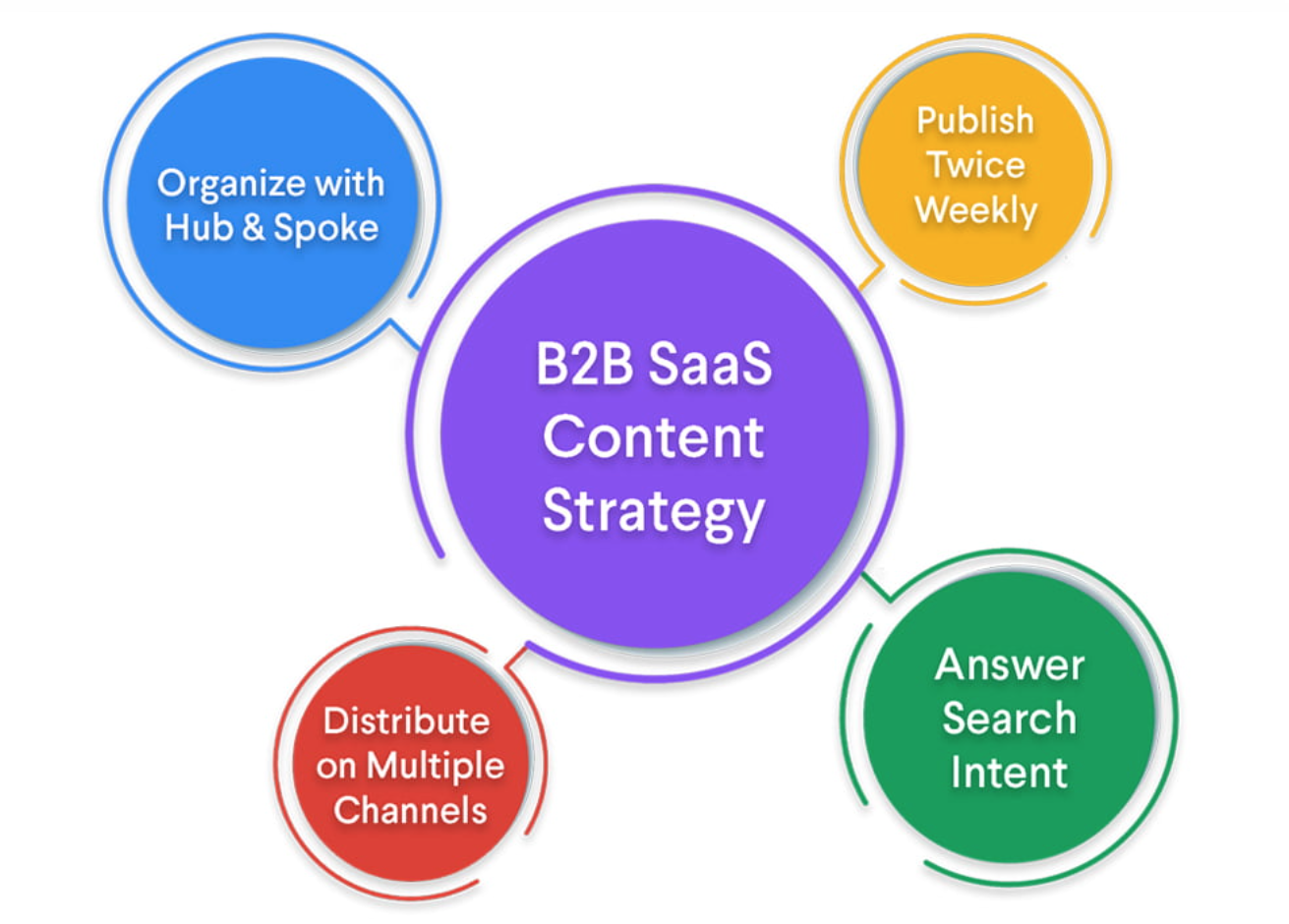
Source
4. Leverage Account-Based Marketing (ABM)
Based on your ICP, identify high-value accounts you want to target and deliver highly tailored content that addresses their unique needs. You can get highly detailed contact databases for your target audience via a third-party provider, but ensure this provider safeguards your prospects’ personal data.
5. Invest in SEO
SEO is a long-term strategy for long-term gains. Strengthening SEO through optimized blogs and pages is critical to building your brand visibility, establishing authority, and improving conversion rates. Consult an SEO expert or a content strategy agency and consider leveraging automation tools like Ahrefs and SemRush to get your foot in the SEO door.
6. Have a range of case studies available
Similar to customer reviews, your prospects are more interested in what your clients have to say. Case studies offer this outsider perspective on your product and help boost your credibility. The more case studies you can share with prospects, the better, particularly if they explore a similar pain point or if the client featured in the case study operates in the same industry. If you already have a handful of customers, convince them to share their experience in as much detail as possible.
7. Leverage individuals’ networks
When you see posts from a company page, you know there is a clear intent to sell. This isn’t necessarily bad, but there are other, more effective ways to build trust and be more personal with your audience.
Your employees’ networks have untapped potential for social selling – but you can easily tap into it with employee advocacy tools. Oktpost offers an employee advocacy feature that enables all your colleagues to segment company posts based on their interests, share pre-approved content, and monitor the success of their efforts.
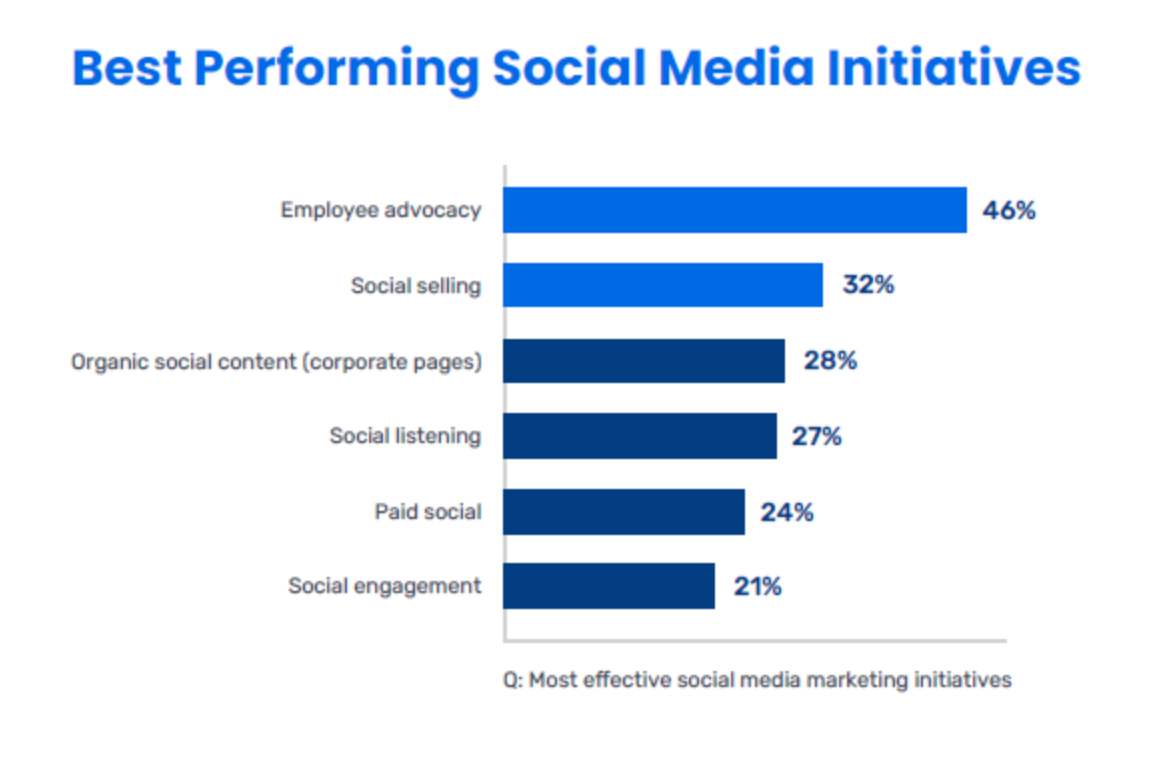
Source
8. Promote referral schemes
Create a referral program that offers incentives to your existing customers and their referred contacts if a referral is successful. The incentives could be discounts, free features, or exclusive access to content.
For instance, Dropbox offers additional storage space to current users who refer new customers to their platform. Users can share their referral links via email, social media, and direct messaging, maximizing word-of-mouth marketing. Ensure you promote your referral scheme through email campaigns or personalized outreach so that your customers keep this offer front of mind.
9. Offer product trials and demos
Product trials and demos are an effective way to drive prospects down the funnel and accelerate the sales cycle. Plus, your sales representatives can offer access to features and tailor the demo to address the prospect’s specific concerns, making it a highly personalized experience. Create an online form or embed your sales reps’ calendars into your website via software like Calendly. Ensure this form is prominent on your website for a smooth online journey.
10. Develop industry partnerships
Partnerships are crucial to establishing yourself as a thought leader in your market, expanding your network, and even getting insider information on industry trends. Some partnerships focus purely on revenue growth, while others are more geared towards marketing, such as co-hosting events or co-producing reports.
If you’re tapping into a new market segment, and there’s a well-established consultancy operating in this market, it may be worth reaching out for a mutually beneficial partnership. Define the objectives and strategy of your partnerships so you can extract the most value from them and accurately measure their results.
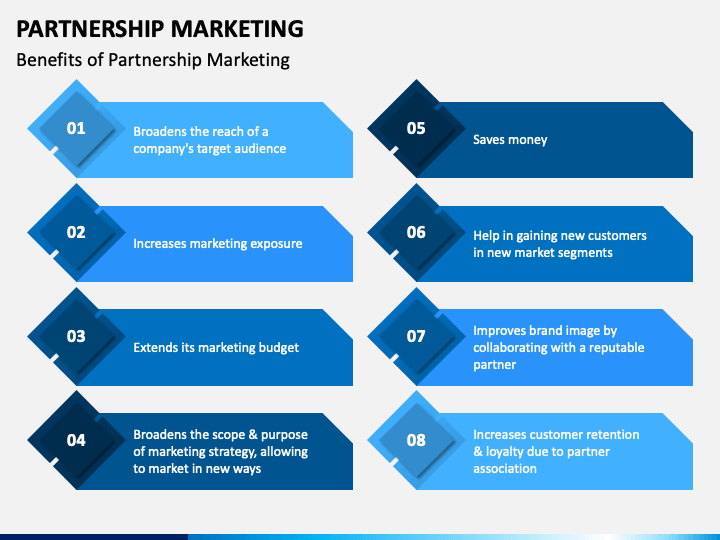
Source
11. Define a clear strategy
Marketing can often feel chaotic, so you need a clear path forward to avoid wasting time and resources. Define a strategy to drive customers down the funnel and ensure you have enough material to cover each stage.
For example, top-of-the-funnel blogs and a consistent social media calendar will help you raise brand awareness, and product pages or email nurture campaigns will help you drive leads down the funnel. You should also regularly review your goals and results to see how the strategy performs and spot new opportunities.
On your marks, get set, grow
There are plenty of B2B SaaS marketing ideas to grow your business, but you must also be realistic and work around your budget and resources. Marketing automation tools can help you expedite your marketing efforts and get the desired marketing ROI without the blood, sweat, and tears.
If you’re looking to break through the noise on social media, Oktopost’s B2B social media management tool can help. Oktopost automates your social media scheduling across channels and provides analytics and social listening features so you can understand your customers and make better marketing decisions. Explore more here.
[ad_2]
Source link